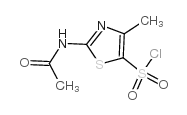1335106-03-0
| Name | N-(5-{[4-(1,1,1,3,3,3-Hexafluoro-2-hydroxy-2-propanyl)phenyl]sulf amoyl}-4-methyl-1,3-thiazol-2-yl)acetamide |
|---|---|
| Synonyms |
5-(methylsulfonamido)pyridin-3-ylboronic acid pinacol ester
N-(5-(N-(4-(1,1,1,3,3,3-hexafluoro-2-hydroxypropan-2-yl)phenyl)sulphamoyl)-4-methylthiazol-2-yl)acetamide Acetamide, N-[4-methyl-5-[[[4-[2,2,2-trifluoro-1-hydroxy-1-(trifluoromethyl)ethyl]phenyl]amino]sulfonyl]-2-thiazolyl]- N-(5-{[4-(1,1,1,3,3,3-Hexafluoro-2-hydroxy-2-propanyl)phenyl]sulfamoyl}-4-methyl-1,3-thiazol-2-yl)acetamide N-[5-(4,4,5,5-Tetramethyl-1,3,2-dioxaborolan-2-yl)pyridin-3-yl]methansulphonamide N-(5-(4,4,5,5-Tetramethyl-1,3,2-dioxaborolan-2-yl)pyridin-3-yl)methanesulfonamide N-(5-(cyclopropylcarbamoyl)-2-methylphenyl)-5-methyl-1-(3-(trifluoromethyl)pyridin-2-yl)-1H-pyrazole-4-carboxamide SR1001 |
| Description | SR1001 is a selective RORα and RORγ inverse agonist; inhibits TH17 cell differentiation and function. |
|---|---|
| Related Catalog | |
| In Vitro | SR1001 inhibits the development of murine TH17 cells by inhibition of IL-17A gene expression and protein production. SR1001 reduces the interaction of a coactivator TRAP220 NR box 2 peptide with RORγ in a dose dependent manner (IC50 value≈117 nM). Additionally, SR1001 inhibits the expression of cytokines when added to differentiated murine or human TH17 cells[1]. |
| In Vivo | SR1001 effectively suppresses the clinical severity of autoimmune disease in mice. Administration of SR1001 to C57BL/6 mice suppresses the expression of hepatic ROR target genes, Cyp7b1, Rev-erbα, and Serpine 1[1]. SR1001 a RORα inverse agonist eliminats the circadian pattern of expression of citrate synthase mRNA in mice[2]. |
| Cell Assay | HEK293 cells are plated in 96-well plates at a density of 15 x 103 cells/well. Transfections are performed using Lipofectamine 2000. 24 h post-transfection, the cells are treated with vehicle or compound (SR1001). 24 h post-treatment, the luciferase activity is measured using the Dual-Glo luciferase assay system[1]. |
| Animal Admin | Mice: Experimental autoimmune encephalomyelitis is induced in C57BL/6 wild-type mice by s.c. injection over four sites in the flank with 200 μg per mouse. The SR1001 is dissolved in DMSO at 25 mg/mL and the mice are treated (i.p.) with 25 mg/kg SR1001 (1 μL/g body weight of mouse) or vehicle (DMSO, 1 μL/g body weight of mouse) twice per day. The treatment is started 2 days before immunization and continued until the end of experiment[1]. |
| References |
| Density | 1.6±0.1 g/cm3 |
|---|---|
| Molecular Formula | C15H13F6N3O4S2 |
| Molecular Weight | 477.402 |
| Exact Mass | 477.025177 |
| PSA | 148.50000 |
| LogP | 3.15 |
| Index of Refraction | 1.557 |
| Storage condition | 2-8℃ |
| Symbol |

GHS07 |
|---|---|
| Signal Word | Warning |
| Hazard Statements | H302-H319 |
| Precautionary Statements | P305 + P351 + P338 |
| RIDADR | NONH for all modes of transport |
| Precursor 2 | |
|---|---|
| DownStream 0 | |


